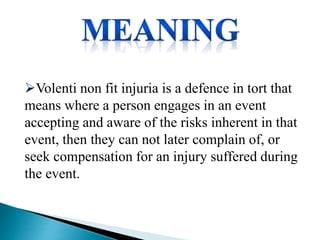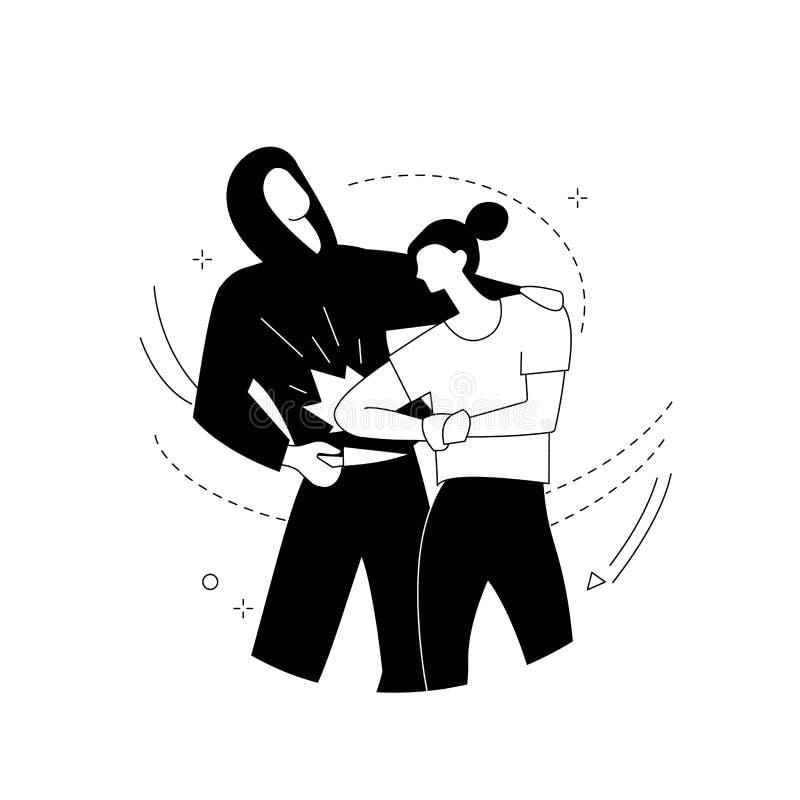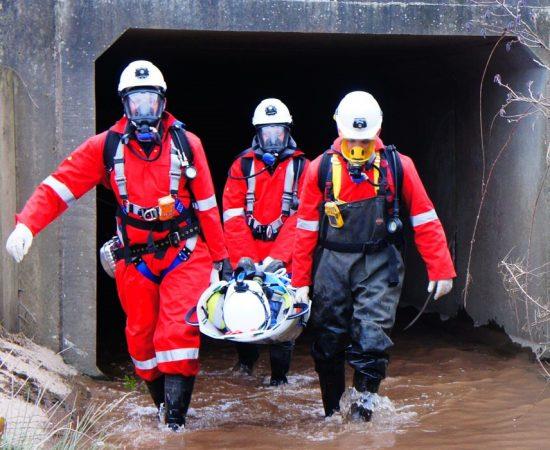|
Card: 3 / 50 |
True or False: The defence of consent can be applied only to the tort of defamation. |
|
Card: 5 / 50 |
Fill in the blank: The defence of ___ applies when an injured party voluntarily agrees to the risk or harm. |
|
Card: 8 / 50 |
It refers to a natural event, such as a flood or earthquake, that makes the defendant's act excusable. |
|
Card: 9 / 50 |
Fill in the blanks: Inevitable Accident applies when an accident occurs that could not have been avoided despite taking all reasonable ___. |
|
Card: 12 / 50 |
It allows a person to perform an act out of necessity to prevent greater harm. |
|
Card: 15 / 50 |
Fill in the blank: The defence of ___ is used when an act is performed to protect oneself or others from immediate harm. |
|
Card: 17 / 50 |
Explain the difference between general defences and specific defences in tort law. |
|
Card: 18 / 50 |
General defences apply to all types of torts equally, while specific defences are applicable only to particular torts. |
|
Card: 20 / 50 |
A tort refers to a civil wrong that causes harm or loss to another, leading to legal liability. |
|
Card: 23 / 50 |
True or False: A postman can be sued for trespass if he delivers mail outside of permissible limits. |
|
Card: 24 / 50 |
False. A postman is protected from trespass as long as he stays within permissible limits. |
|
Card: 25 / 50 |
What are the essential conditions for consent under the doctrine of Volenti Non Fit Injuria? |
|
Card: 26 / 50 |
Consent must be freely given without coercion, fraud, misrepresentation, or mistake. |
|
Card: 30 / 50 |
False. A guest can be sued for trespass if they enter a restricted area without permission.  |
|
Card: 31 / 50 |
In the context of medical negligence, consent does not absolve a doctor of liability if ___ occurs. |
|
Card: 33 / 50 |
Fill in the blank: The case of White v Blackmore illustrated that consent must be freely given without ___, ___, or ___ to be valid. |
|
Card: 35 / 50 |
What was the court's ruling in the case of a patient who died due to improper care during anesthesia? |
|
Card: 36 / 50 |
The court ruled that the doctor could be held liable for negligence despite the patient's consent. |
|
Card: 37 / 50 |
The rule of volenti non fit injuria states that a person who voluntarily accepts a risk cannot claim for injury. True or False? |
|
Card: 38 / 50 |
True. This rule implies that if someone willingly engages in an activity that involves risk, they cannot later claim for any injuries sustained.  |
|
Card: 39 / 50 |
In what situation might an employee not be considered to have voluntarily waived their legal rights despite continuing to work in unsafe conditions? |
|
Card: 40 / 50 |
When the employee raises concerns about unsafe practices but continues to work, their continued presence does not imply consent to the risks involved. |
|
Card: 41 / 50 |
Fill in the blank: The principle of volenti non fit injuria may not apply to individuals engaged in ___ operations. |
|
Card: 43 / 50 |
What is one reason why drunk drivers may not be held to the rule of volenti non fit injuria? |
|
Card: 44 / 50 |
Drunk drivers may lack the capacity to fully understand or accept the risks involved in their actions, making the application of the rule questionable. |
|
Card: 45 / 50 |
Fill in the blank: In the case of safety concerns at work, an employee's continued work despite risk does not imply ___ to those risks. |
|
Card: 47 / 50 |
True or False: A rescuer is considered to be acting voluntarily when they are responding to a situation caused by the defendant’s negligence. |
|
Card: 48 / 50 |
False. A rescuer is not considered to be acting voluntarily if they are trying to save individuals or property at risk due to the defendant's negligence. |
|
Card: 49 / 50 |
What principle is applied when assessing the actions of a rescuer who faces a risk to save another person? |
|
Card: 50 / 50 |
The principle of assumption of risk does not apply when a plaintiff acts to mitigate a situation caused by the defendant's wrongful actions. |


























